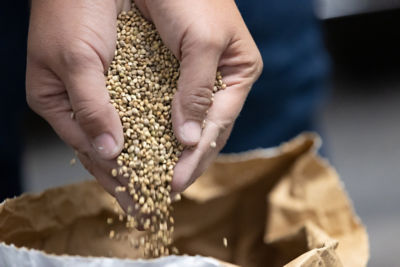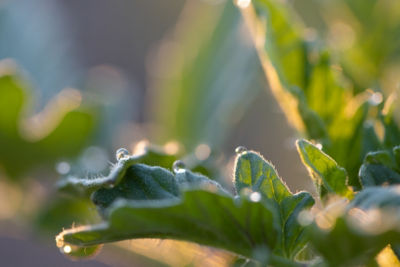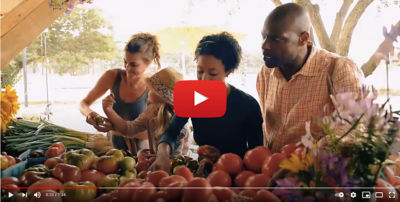Tomatoes are one of the most profitable crops and the second most widely produced vegetable in the world, with 182 million tons produced annually.1 Known for their high vitamin and nutrient content, including the antioxidant lycopene, tomatoes also provide many benefits for human health and nutrition.2
However, ensuring a tomato crop yields high quality fruit that makes it all the way from the field to the plate is no easy task. Tomatoes are one of the most vulnerable vegetables to post-harvest losses due to their softness, perishability and susceptibility to pests. They also need to survive transportation, maintain a good shape and have a good appearance and shiny red color to meet supermarket demands.
Our Vegetables by Bayer team, with our Seminis and De Ruiter seed brands, are committed to developing high-quality tomato varieties designed for all types of production environments, including open-field, protected and processing. In this story, we will focus on the processing segment, which accounts for 20% of tomatoes produced around the world.3
“Processed tomatoes contain a wide variety of nutrients and play a key role in health and nutrition; according to the Food and Agriculture Organization of the United Nations (FAO) they contain a high concentration of lycopene, one of the most powerful antioxidant ingredients found in food. It is important to continue developing and adopting more sustainable production practices across the value chain to ensure consumers have access to such an essential and nutritious vegetable all year long, support farmers and take care of the environment. We have the social and environmental responsibility to advance health and nutrition for all.”
Built for automated harvesting, processing tomatoes are significantly different from their fresh market counterparts. They have thick skins to withstand mechanized harvests and bulk transportation to processing facilities. Generally, the ideal processing tomato is a square, firm fruit with low water, high solid and high sugar content.4
Regardless of geography, climate or plant characteristics, the sustainable production of processing tomatoes is continuously evolving to meet current and future challenges. Further, the industry is constantly looking for innovative ways to not only maintain or exceed production levels, but also to conserve natural resources despite increasing challenges.
The Evolution of the Processing Industry in California

Responsible for about 30% of global tomato processing production and 95% of US processing tomatoes, California is the industry’s main producer and has a rich history in processing tomato production.5;6 There have been several major advancements in California’s tomato processing industry, from the first disease resistant tomato varieties introduced in the 1960s to the creation of the first-ever mechanized tomato harvester and the transition from direct seeding to seed transplantation practices in the 1990s to ensure plant vigor and production in unpredictable weather patterns.
The widespread adoption of drip irrigation in California in the early 2000s further enhanced production, reduction in water usage greater than 25%.8 These are some of the pivotal milestones and achievements that have contributed to the evolution of the tomato processing industry in this key production region.

Innovation & Technology Address Opportunities for Climate Smart Production
Nowadays, the industry is facing new challenges but also opportunities. Innovation and technology are enabling the agriculture industry to make significant progress in feeding the world while helping to protect the environment. Today it takes 64% less land to produce the same quantity of tomatoes than it did in the 1960s.
Lower land requirements can potentially translate to lower carbon emissions, crop protection products application and water usage, and potentially improving production efficiency.
“California’s farmers are facing the consequences of a record multi-year drought in their daily lives and livelihoods, experiencing water shortages, wildfires, severe weather temperature, and consumer pressure to deliver high-quality products. It is also affecting their businesses. Despite the challenges, they are being resilient. We are heavily investing in research and technology to increase innovative solution to support them.”
However, tomato growers in California are experiencing the negative impacts of climate change, such as drought and higher temperatures.7 These challenges grow bigger with time; it is estimated that with rising temperatures, only a portion of land historically used for growing tomatoes will have a climate suited to tomato cultivation, resulting in reduced production. Additionally, California faces a water shortage.8,9 Evidently, water allocation is a complex issue, and processing tomato growers need solutions
Moreover, scientists project that, with the current infrastructure, about 52% less water will be available in the future during spring and summer months due to changes in rainfall patterns and a 48% reduction in snowpacks by 2050.10 California’s changing weather makes farming less certain in the future, placing domestic food production at risk.11
As an innovative company, Bayer is committed to continuing to invest in developing tailored innovations and digital solutions that help to increase output to ensure tomato growers have increased yield potential and a productive and profitable season despite the changing weather conditions.

Opportunities through innovation
With the challenge of water shortage top of mind, the Bayer team is constantly working on delivering innovation to farmers who are in desperate need. While tomatoes thrive in hot, dry summers, plant growth relies on consistently moist soil. Thus, all Californian processing tomatoes are irrigated to help protect against crop loss. Farmers recognize water as a valuable limited resource and, as a result, excel at efficient use, routinely diverting water to more sensitive or high value crops. Monitoring the crops with digital solutions helps ensure plants receive sufficient moisture and help growers to get the highest yield for every drop of water used.
In addition to digital solutions, seed varieties play a vital role in the overall success of production. “Early class” processing tomatoes mature in less than 115 days (as opposed to ~125 days for full season counterparts), the shorter growing season requiring lower water inputs. So why are farmers in areas affected by water shortages not exclusively growing early class processing tomatoes? One simple reason is that early processing tomatoes have historically provided slightly lower yields, and it can be difficult to get the desired chemical (e.g., sugar) profile. Yield, quality and chemical profile (sugar, moisture, pH, etc.) are critical to processing tomatoes.
At Vegetables by Bayer, our seed variety SVTM9032 is a great example of innovation through early maturation. SVTM9032 not only has yield potential comparable to main season varieties, but its chemical profile is better. As an early maturer, SVTM9032 could mean up to 4.2 inches of water saved per acre – while producing excellent quality and quantity. This demonstrated success provides the blueprint for a breeder focus – early class tomatoes with full season chemistry and yield potential, and full season tomatoes with improved water efficiency and high yield potential.
Future opportunities for processing tomatoes
While challenges persist, the future of processing tomatoes in California looks bright for the global agricultural leader. Since 2006, California has been embracing climate-smart agriculture (CSA), a globally recognized policy framework that balances the essential demands of agriculture and sustainability, limit agriculture's contribution to global greenhouse gas (GHG) emissions, decrease agriculture's vulnerability to the impacts of climate change and acknowledge the essential link between agricultural productivity and food security.12
The state is heavily investing in research and technology to develop innovative solutions to help achieve GHG emissions reductions.13 Some of these investments are directed towards more sustainable tomato production and processing, like developing technologies that consume less energy and result in a higher quality product.14
The emerging sustainable production practices of processing tomatoes can contribute to a significant reduction of GHG emissions, increase food security, reduce water usage, empower the agricultural community, minimize adverse economic and social impacts and provide high-quality tomato products to consumers.15
Join us on our journey
Our Vegetables by Bayer teams have consistently used innovation and technology to bring sustainable solutions to the market, allowing customers to reap the benefits of increasing yield potential and excellent pest and disease control despite increasing environmental challenges. The processing tomato segment is no different. Our teams continue to focus on developing new innovations for customers in the processing segment in California and beyond to help ensure productive and sustainable yield potential as well as food for consumers around the world.
See more here and join us in our vision “Health for All. Hunger for None.”
1 Fruit and vegetables – your dietary essentials. (2020). The International Year of Fruits and Vegetables, 2021 Background Paper. https://doi.org/10.4060/cb2395en
2 Beecher, G. R. (1998). Nutrient Content of Tomatoes and Tomato Products. Experimental Biology and Medicine, 218(2), 98–100. https://doi.org/10.3181/00379727-218-44282a
3 Tomato Processing Market: Industry Trends & Forecast 2022–27. (2022b). IMARC Group. https://www.imarcgroup.com/tomato-processing-plant
4 Commodity Fact Sheet Processing Tomatoes. (2020). California Tomato Growers Association, Inc. chrome-extension://efaidnbmnnnibpcajpcglclefindmkaj/viewer.html?pdfurl=https%3A%2F%2Fcdn.agclassroom.org%2Fca%2Fresources%2Ffact%2Ftomatoes.pdf&clen=319072&chunk=true
5 Hartz, T. (2021). Processing Tomato Production in California. Processing Tomato Production in California, 7228, UC Vegetable Research & Information Center.
6 PowerPoint; CA processing tomato Case Study 2022 provided by Vegetables by Bayer Team
7 Several issues impacting California processing-tomato growers. (2022, January 26). Vegetable Growers News. https://vegetablegrowersnews.com/news/several-issues-impacting-california-processing-tomato-growers/
8 Water Use in California. (2022, March 14). Public Policy Institute of California. https://www.ppic.org/publication/water-use-in-california/
9 Ramirez, R. C. (2022, May 7). California reservoirs: The state’s two largest are already at “critically low levels” and the dry season is just starting. CNN. https://edition.cnn.com/2022/05/07/us/california-water-shasta-oroville-climate/index.html
10 Pathak, T., Maskey, M., Dahlberg, J., Kearns, F., Bali, K., & Zaccaria, D. (2018). Climate Change Trends and Impacts on California Agriculture: A Detailed Review. Agronomy, 8(3), 25. https://doi.org/10.3390/agronomy8030025
11 The Next California. (2020, February). https://c402277.ssl.cf1.rackcdn.com/publications/1306/files/original/The_Next_California_Phase_1_Report_02-27-20.pdf?1582813424
12 Lewis, J. (2019). The Policy Enabling Environment for Climate Smart Agriculture: A Case Study of California. Frontiers. https://www.frontiersin.org/articles/10.3389/fsufs.2019.00031/full
13 Lewis, J. (2019). The Policy Enabling Environment for Climate Smart Agriculture: A Case Study of California. Frontiers. https://www.frontiersin.org/articles/10.3389/fsufs.2019.00031/full
14 FUTURE INNOVATIONS IN TOMATO PROCESSING. (2015). International Society for Horticultural Science. https://www.ishs.org/ishs-article/1081_3
15 Lewis, J. (2019). The Policy Enabling Environment for Climate Smart Agriculture: A Case Study of California. Frontiers. https://www.frontiersin.org/articles/10.3389/fsufs.2019.00031/full
Performance may vary, from location to location and from year to year, as local growing, soil and weather conditions may vary. Growers should evaluate data from multiple locations and years whenever possible and should consider the impacts of these conditions on the grower’s fields. Bayer, Bayer Cross, De Ruiter® and Seminis® are registered trademarks of Bayer Group. All other trademarks are the property of their respective owners. ©2022 Bayer Group. All rights reserved.



